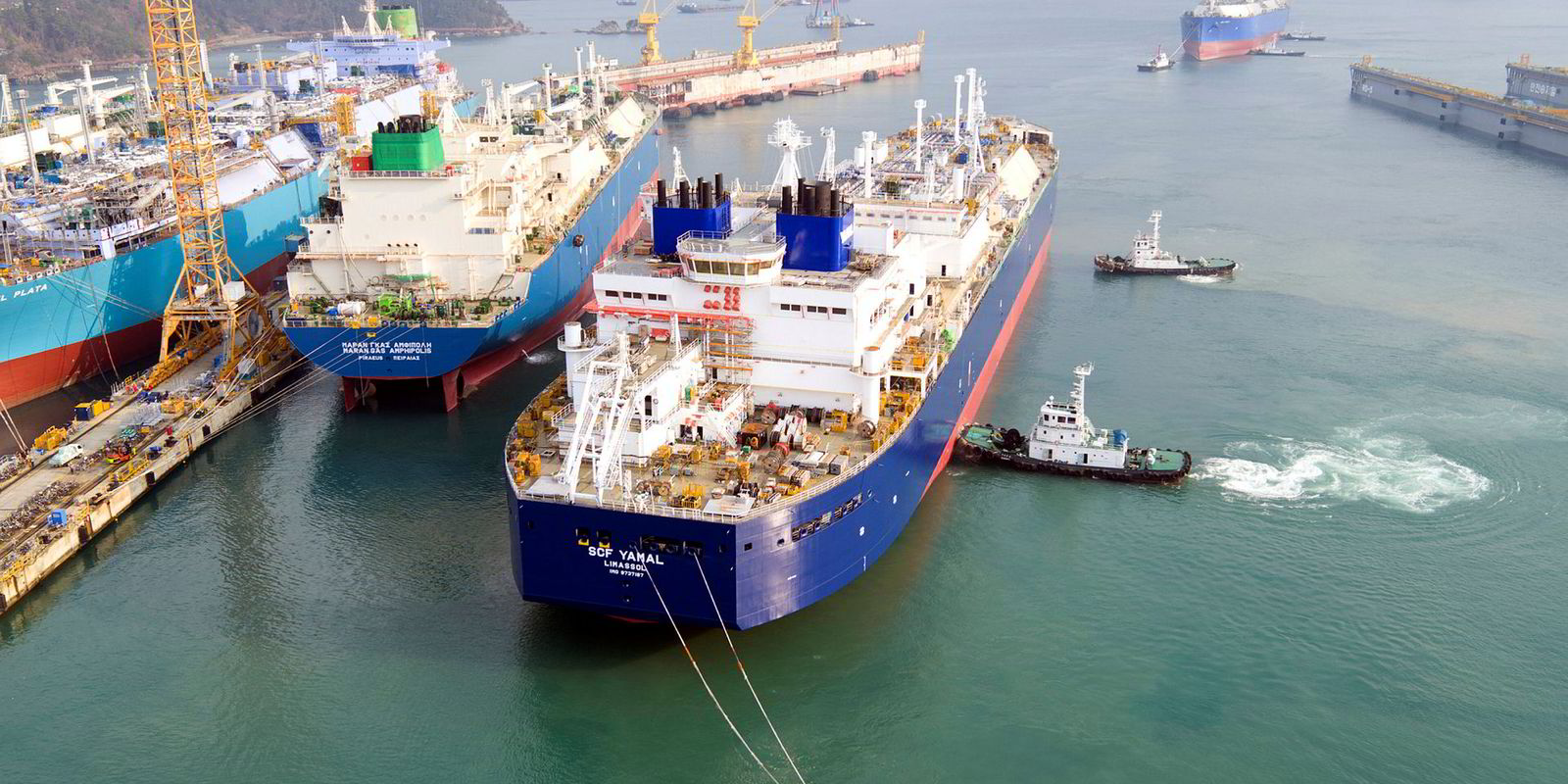A fragile recovery in the shipbuilding market appears to be continuing with prices strengthening in response to cuts in capacity and rising demand.
2018 is set to mark the sector's second consecutive year of improving figures after orders slumped to a 30-year low in 2016 with only 14.3 million cgt of bookings placed globally.
In 2017, around 27.3 million cgt was contracted, according to figures from Clarksons Research. With 21.3 million cgt already booked this year and a rally in orders predicted for the final quarter, 2018 is on target to match those numbers.
Global backdrop
Shipyard output is falling, reflecting lower ordering levels in the post-2016 market. Clarksons expects production to fall a further 10% this year, and another 10% in 2020.
However, Clarksons says the world orderbook now stands at 76.5 million cgt (140 million gt) and is valued at $220bn.
And of that, the resurgent European shipbuilding industry accounts for $53.1bn in bookings, more than the individual orderbooks of China, South Korea or Japan.
Stephen Gordon, managing director at Clarksons research division, says the recovery in European shipbuilding is one of the standout features of the current market, in which newbuilding prices have recovered by around 10% on last year.
“We should congratulate Europe on its orderbook. If you go back 30 years, the decision to focus on the high-value market against Asian competition is now paying off,” he says.
Strong headwinds
Of the wider market, Gordon says: “It is better than two years ago, but it is still a tough market for shipbuilders, with strong headwinds.”
One concern is that the current trade spat between the US and China will damage investor sentiment.
However, he believes the renewal of the world fleet and a ongoing recovery in trading markets will generate fresh orders for yards.
And, he adds, the IMO's upcoming regulation on reducing carbon emissions is a “wild card” that could deliver a significant boost to business.
“We have been saying for some time that the regulatory agenda is accelerating and creating significant requirements for technology to be fitted to new ships or retrofitted to existing ships,” he says.
'2020 wild card'
“So, looking at the positives for shipbuilding, there is the emergence of new technology and environmental regulation, the shipping markets are improving and edging forwards, and then you have the 2020 wild card.”
The possibility of higher fuel prices in post-2020 is likely to encourage demand for newbuildings fitted with scrubbers that can burn cheaper residual bunkers and still comply with sulphur regulations.
Clarksons' figures show some 29% of the world orderbook are to have scrubbers installed, indicating growing momentum towards the technology.
“You could have a scenario where 10% to 15% of fleet have a scrubber fitted by the end of 2020, and in some sectors, like VLCCs, it could be even higher. That is a positive factor for suppliers and for shipyards,” Gordon says.
He points out that a higher fuel price will bring “fuel economics back into play”, in the shipping business after a long period of low fuel prices.
Investment story
“We will have a higher fuel price in play and that will benefit any shipyard that can offer opportunities for fuel consumption reduction and energy saving. The fuel economy story is a more compelling one today than it was three years ago,” he says.
Convincing business case
London-based research company Maritime Strategies International (MSI) says fuel efficiency economics will provide a convincing business case to attract investment funds to the market.
MSI managing director Adam Kent says: “Owners can now make a case around fuel economy and sell it to the capital markets. It is similar to the 2013 eco-ship scenario.”
Kent points out that demand for LR and MR tanker newbuildings is likely to be generated by the 2020 regulation to meet the growing trade in clean products as a fuel oil for ships.






